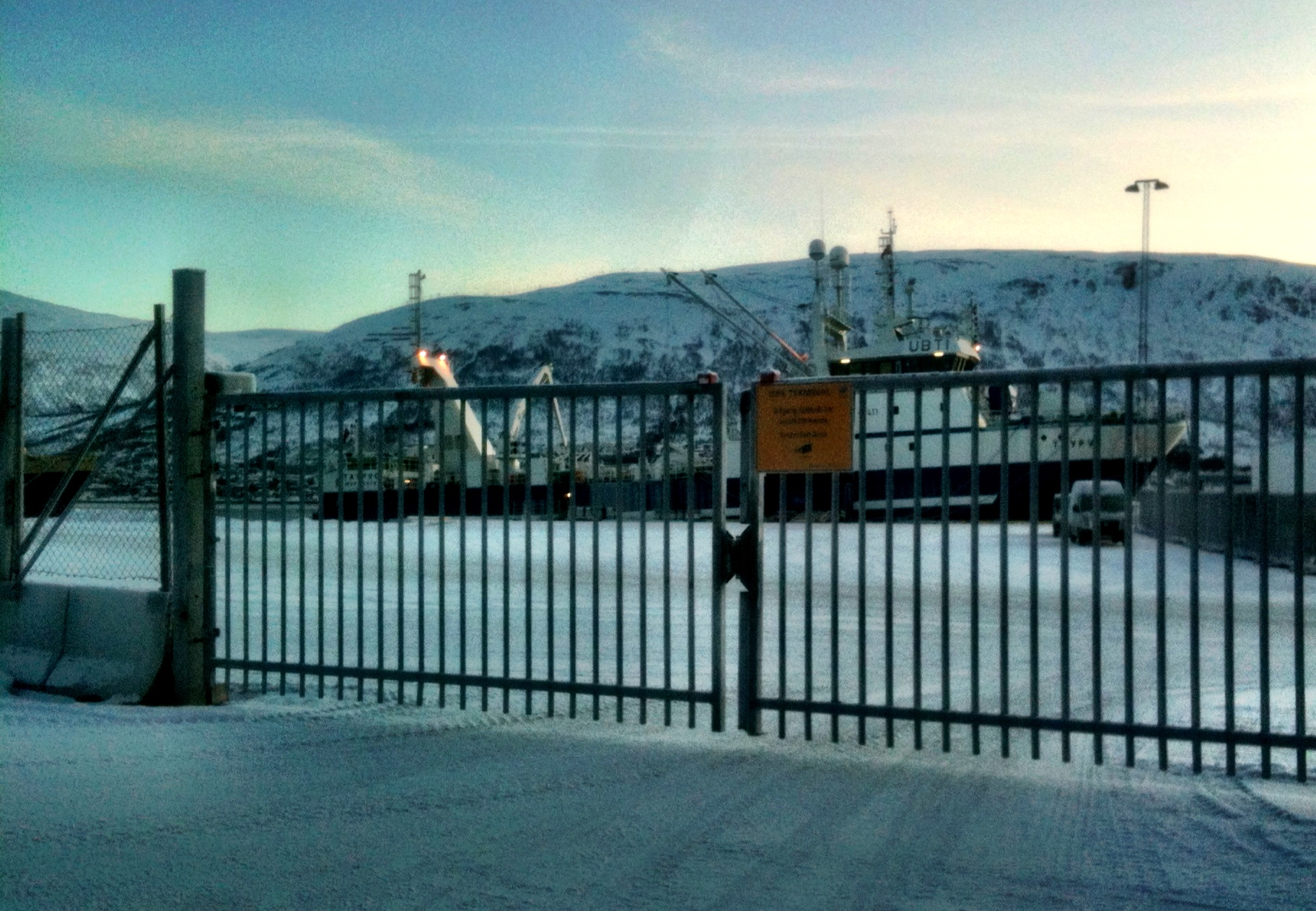Port Security regulations are intended to prevent that ships in international traffic and port facilities serving those are subjected to acts of terrorism, or other intentional illegal acts.
The Norwegian Coastal Administration is responsible for the implementation of the International Ship and Port Facility Security Code (ISPS Code) and port security regulations in all Norwegian ports and port facilities covered by these regulations.
The ISPS Code has been adopted by the International Maritime Organization (IMO) to enhance the security of ships in international traffic, and port facilities serving such ships.
Why port security?
The terrorist attacks against the United States on 11 September 2001 represent a watershed in terms of how terrorist attacks are carried out on the international stage. As a result of the threat of terrorist attacks against ships and port facilities as well, the ISPS code was developed and adopted by the IMO in December 2002. The regulations entered into force on 1 July 2004.
Ports have an important function for society as a hub between transport modes, and as terminals for passenger traffic in domestic and international traffic. The port itself is directly vulnerable to external threats, and indirectly through representing a threat to ships. Terrorist attacks on ports can cause major damage to transportation systems, infrastructure, industry and individuals.
The threat of terrorist attacks on Norwegian ports and port facilities has been an alien concept to many. However, information from the police security services indicates that the threat picture in Norway is characterized by increasing uncertainty (cf. threat assessment for 2011). There are activities in certain communities in Norway that contribute to increased tension in the threat situation.
Although the ISPS regulations were drawn up as a result of the threat of terrorist attacks, many Norwegian port terminals experience that the regulations have other positive consequences besides protecting against terrorism. The security measures prevent unauthorized access to the area, which leads to fewer thefts and less vandalism within the defined ISPS area.
Who is included?
The ISPS regulations include a number of regulatory requirements and specific security measures that must be implemented on board the following vessels in international traffic and at port facilities serving such ships:
- Passenger ships, including high-speed passenger ships.
- Cargo ships, including high-speed cargo vessels, with a gross tonnage of 500 and above, mobile drilling units that move under their own propulsion
In the Norwegian port security regulations all ships with an ISS Certificate (ISSC) are at any time considered to be in international traffic. That means all port terminals that accept vessels with ISSC must be ISPS approved in accordance with port security regulations. It would be a violation of the regulations if a port terminal receives ships in international traffic without valid ISPS approval, which could lead to prosecution.
The NCA's role
The NCA is responsible for the implementation of the ISPS regulations that apply to ports and port terminals. Those parts of the regulations that apply on board vessels are the responsibility of the Norwegian Maritime Directorate.
ISPS regulations that apply to ports and port terminals are laid down in Norwegian law through the Regulation of 3 July 2007 No. 825 relating to securing ports and port facilities against terrorist acts, etc. (The Port Security Regulations).
The NCA approves vulnerability assessments, security plans, PFSO/PSO and issues certificates (SoC). The NCA also conducts verifications, audits and announced/unannounced inspections. The NCA's work within ISPS also includes general advice and information activities, development and interpretation of regulations, monitoring of international regulations and guidelines, and monitoring inspections by ESA.
The NCA has approved more than 600 port terminals in Norway (2012). This means that Norway has the highest number of ISPS approved port terminals in Europe. In comparison, Sweden has around 300 approved terminals, Denmark has about 240 and Germany has around 430 ISPS approved terminals.
Security level
An important task in port security is to determine the applicable level of security for ports and port terminals. It is the NCA through the maritime safety director who has the authority to establish and change the security level. Security level 1 is the normal level, the level at which a minimum of appropriate security measures must be maintained at all times. If there is an increased risk of events that can threaten security, the level may be raised to security level 2 If an event that can threaten security is imminent or likely, the security level may be raised to level 3.
